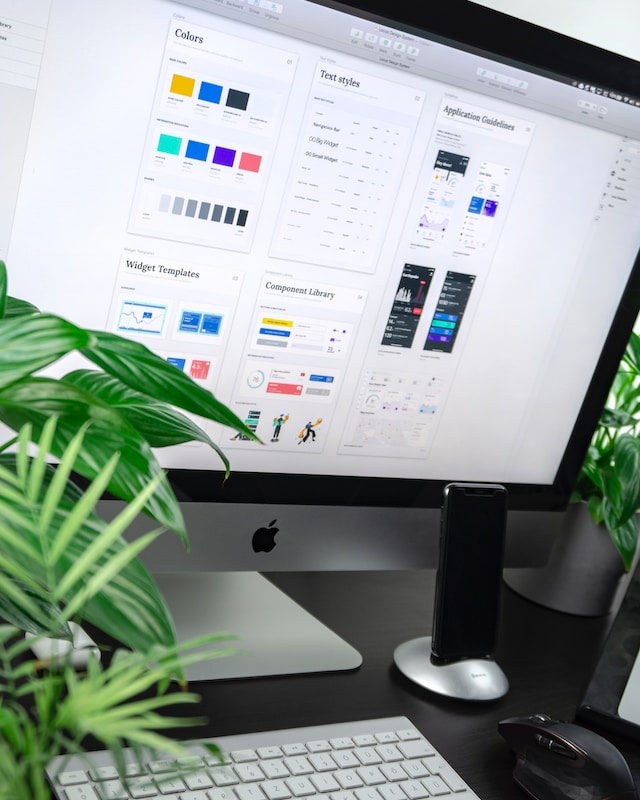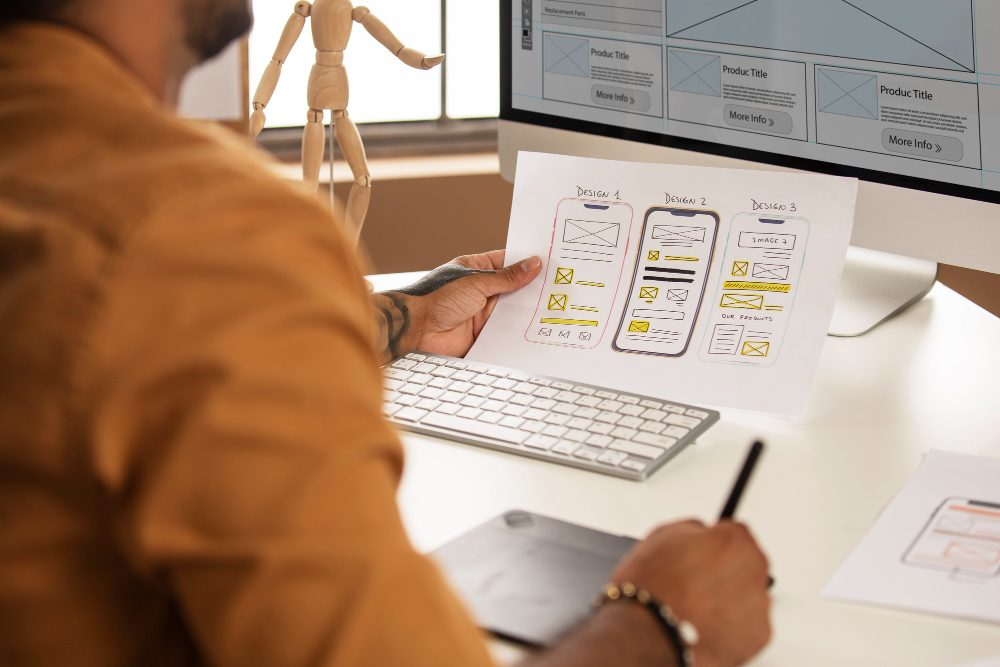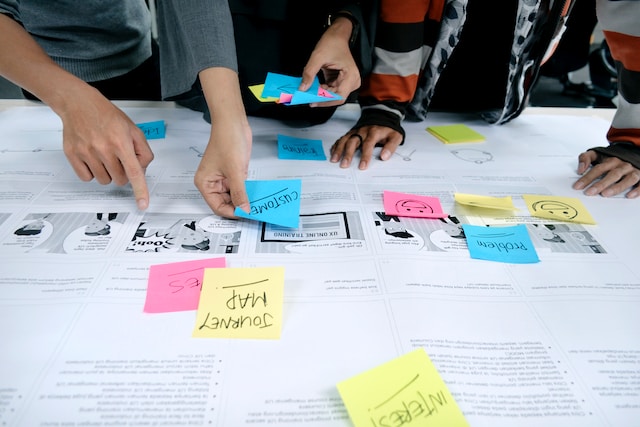UX design is a thriving industry, with the demand for UX designers steadily increasing. From eCommerce to travel to healthcare, several industries rely on intuitive, engaging UX design to attract loyal customers.
Given the importance of UX design in today’s digital landscape, it’s unsurprising that budding designers gravitate towards the UX field.
If you can also see the appeal of UX design, have you ever considered how to become a UX designer?
If you have a passion for human-computer interaction and user-centricity, then you’ll love being a UX designer.
In today’s actionable guide, we shall explore the meaning of user experience design. We will also reveal how to become a proficient UX designer!
What Is User Experience Design?
If you’re interested in or have heard snippets regarding user experience design, it’s likely that you’ve got some questions.
The most obvious question is, ‘What is user experience design?’ Look no further; we’re here to provide the answers!
User experience design refers to the process of creating products/digital experiences. Design teams will tailor such products to users’ needs, desires, goals, and problems (with the hopes of resolving them).
The user experience design process involves several facets of product development, such as function, marketing, and—of course—design. UX designers will focus on how they introduce the product to the user. They will also focus on how the user interacts with the product and how they feel after experiencing said interaction.
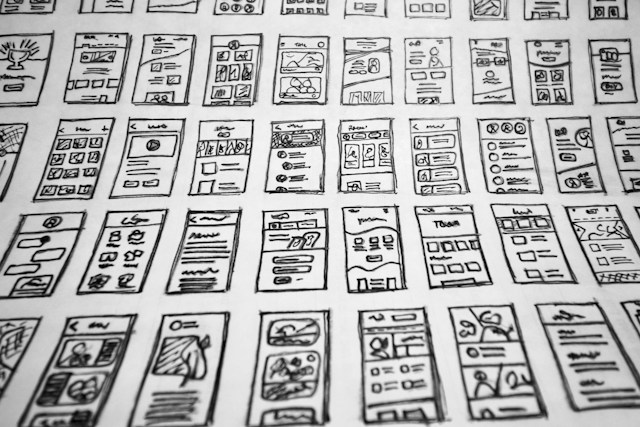
How To Become a UX Designer With No Experience
To become a proficient UX designer, your knowledge must span across several fields. From graphic design to psychology, a UX designer’s role is to optimize the user’s experience.
You may think that you need endless amounts of experience to thrive as a UX designer. It would be an understandable assumption, but this isn’t actually the case.
So, having said that here is how to become a UX designer with no experience.
1. Enroll in a UX Design Course
First of all, you’re going to need some specialized prowess. Consider UX-related Bachelor’s and Master’s Degrees to learn the ins and outs of digital design.
However, we appreciate that completing a university degree is a long-term commitment. So, if you’re looking for an alternative educative journey, you should consider the following online courses:
- CareerFoundry’s UX Design Program
- Generalassemb.ly’s Beginner UX Design Course
- Udemy’s User Experience Design Fundamentals Course
- Skillshare’s Intro to UX: Fundamentals of Usability Course
- Coursera’s Introduction to User Experience Design Course
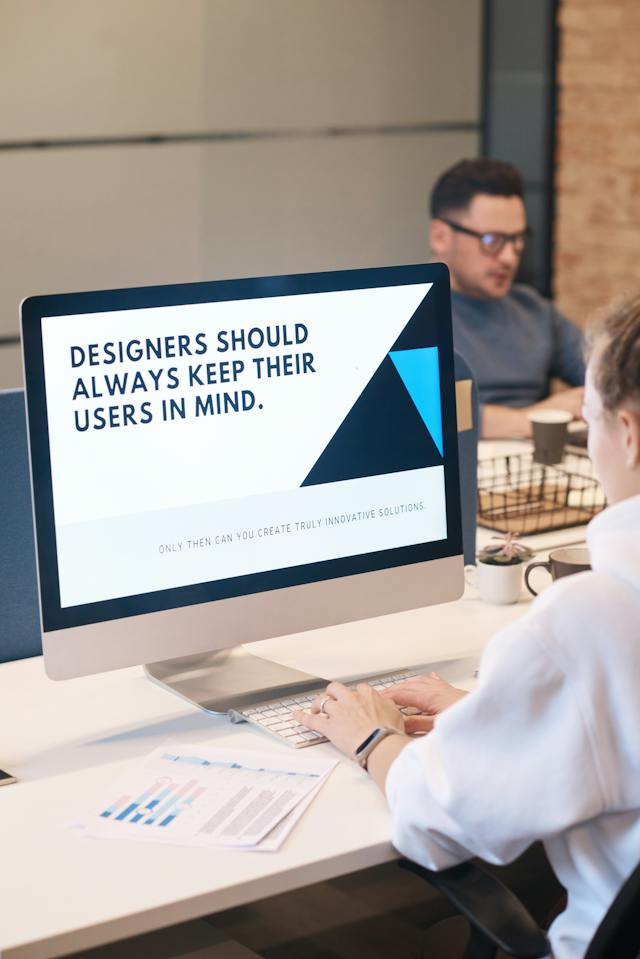
2. Consider Free Resources
UX design courses and college degrees will provide you with specialized competencies regarding UX design subtopics. However, you may still find yourself feeling unsure about a specific aspect that you’d like to learn more about.
Additionally, you may find yourself in a position with an abundance of expertise and no inspiration. You could learn from real UX designers and take inspiration from their success stories. Blogs and YouTube videos are a great place to start when seeing how real UX designers have found success.
Here are some blogs you should peruse:
- Page Flows: Page Flows produces informative, actionable guides that cover a range of topics and suit the needs of UX beginners. You’ll learn which UX research tools to use, which design principles to adhere to, and so much more!
- UX Booth: UX Booth’s blog covers major topics of UX design, like information architecture and interaction design. You’ll also learn about content strategy and accessibility, which is a vital part of all design jobs.
- Muzli: The Muzli blog offers a multitude of UX design case studies. See how you can apply the theoretical knowledge you’ve gained to real-world projects and learn to overcome the challenges they present. We recommend you utilize this blog when you come to Step 6 — creating your own portfolio!
Additionally, here are some YouTube channels to help you find even more inspiration and motivation.
3. Complete a Bootcamp
A UX boot camp is an intensive training program that offers a comprehensive syllabus for beginner UX designers. UX boot camps usually span between 4-12 weeks, making them an immersive yet hasty, way to learn UX design basics.
Here are some of the best UX boot camps:
- Generalassemb.ly’s UX Design Bootcamp
- CareerFoundry’s UX Design Program
- Springboard’s UI/UX Design Bootcamp
- Brainstation’s UX Design Bootcamp Online
- Memorisely’s UX/UI Design Bootcamp
4. Work on Independent Projects
During your course/boot camp, you can expect to work on at least one project to demonstrate your newfound abilities.
You should strive to continue to develop those projects to refine your knowledge of design tools like Figma and Sketch.
Once you’ve completed your projects, you should distribute them amongst the UX design community to garner valuable feedback.
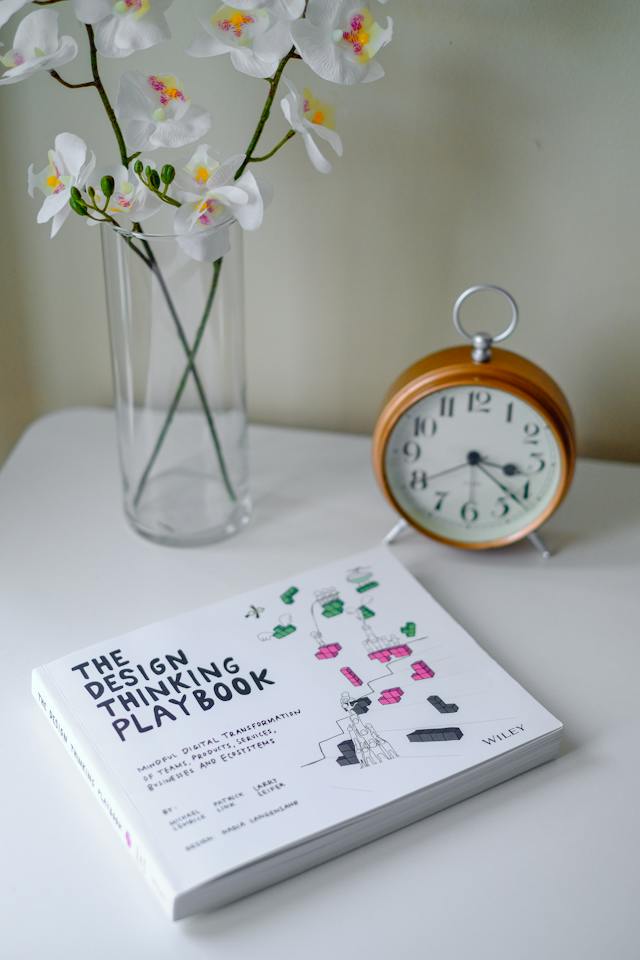
5. Get Some Practical Experience
You should now contextualize your prowess and combine it with professional critical thinking to work with real clients.
You should consider a design internship or freelance work. In doing so, you’ll bolster your communication, time management, and collaboration skills. Working with real clients, you’ll start to practice user-centricity, and that will appeal to hiring managers.
6. Create a Portfolio
As soon as you’ve completed the previous steps, you can create an impressive portfolio.
Your portfolio serves as a magnification of your skills and experience. We’ll touch on this more in a later section. However, the key takeaway is that your portfolio should emphasize how you can improve the user’s experience.
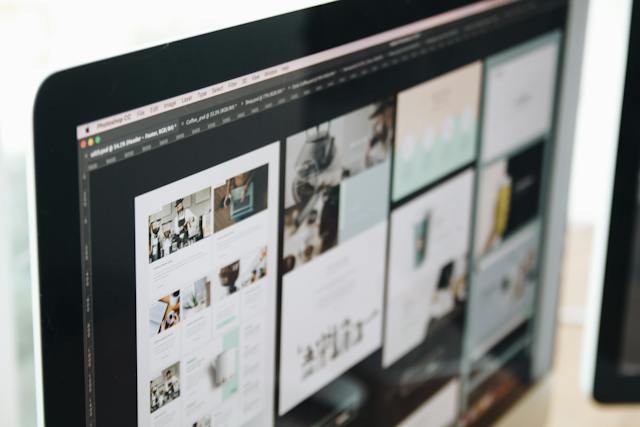
How To Become a Freelance UX Designer
UX designers unify usability, enjoyability, marketing, and branding into a single design. Additionally, UX designers must ensure that they practice design inclusivity so that their designs appeal to all user types.
If it sounds challenging, then you’re on the right track. Embarking on a career as a freelance UX designer is meant to challenge both you and your work ethic. You must pull out all of the stops to impress potential clients. After all, you’ll dedicate a lot of time to finding them.
So, if you’re looking to expand your user base and grow your business, you’ll find these recommendations extremely useful.
Here’s how to become a freelance UX designer.
1. Refine the Necessary Skills
If you’ve enrolled in a course/boot camp, you’ll have a great understanding of the necessary skills of UX designers.
For the sake of refinement, we shall outline both the technical and soft skills required to thrive within your role.
Technical Skills:
- Visual design skills
- User research
- Analytical thinking
- Information architecture
- Wireframing
- Prototyping
Soft Skills:
- Empathy
- Critical thinking
- Communication
- Collaboration
- Time management
If you know you have areas for improvement concerning the above skills, you should review your prior work. Analyze your previous design processes and make note of how you could’ve adjusted them to strengthen your skillset.
2. Connect With Online UX Design Communities
Learning from other professionals within the UX design community will never hinder your progress toward your dream job.
By engaging with like-minded UX designers, you can obtain useful contacts, receive beneficial tips, and expand your expertise. Your contacts may even offer alternative solutions to the challenges you encounter!
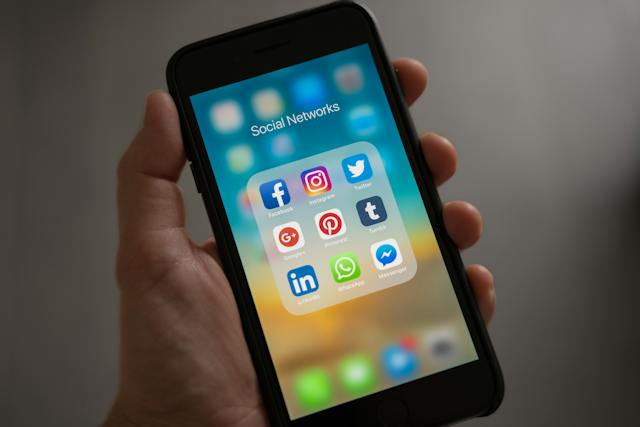
3. Market Yourself
Utilize social media to showcase your work. Promote your work via social media’s shareability features and visual elements.
From here, you could make a website dedicated to your work. Once you have established an online presence, you could open a channel of communication with your prospective clients.
4. Consistently Ask For Feedback
Now that you’ve started to gain clients, it’s time to ask for feedback.
Needless to say, producing high-quality products is the best way to generate positive feedback. Additionally, you should maintain a friendly professionalism. Let your clients know that you appreciate their time and feedback.
Of course, an important part of becoming a freelance UX designer is building a portfolio. Don’t worry—we’ll explore effective UX portfolios shortly.
How To Become a Better UX Designer
If you’ve completed every step, you’ll find yourself in the position of a UX designer. Now it’s time for the next step: how to become a better UX designer.
Here are a few tips to become a better UX designer.
- Never stop learning.
- Consistently practice your craft.
- Utilize technology and experiment with design tools.
- Explore multiple solutions.
- Set personal learning goals.
- Prioritize inclusivity.
- Review your projects.
- Celebrate creative thinking.
How To Become a UX Designer: Building Your UX Design Portfolio
A UX design portfolio serves as an assemblage of work samples that emphasize your skills/abilities as a UX designer.
Regardless of experience, you should take pride in your UX design portfolio. Although a professional portfolio illuminates valuable practical experience, it’s also a testament to your dedication.
Your UX design portfolio has a monumental influence over your employment.
Thus, we believe that you should know everything about creating an exceptional reflection of your design process. Here’s how you go about it:
- Add a homepage. Your homepage should include a short introduction that summarizes who you are and your specialisms.
- Expand on your bio. This is where you should explore your personal and professional background in more detail. You should emphasize what makes you unique and how you personalize the design process.
- Incorporate UX case studies. In this section, you’ll explore projects you’ve previously worked on. You should provide your reasoning for every step of the design process and discuss how you resolved any challenges.
- Include your contact details. You should add your professional email address, a contact form, and links to your social media accounts.
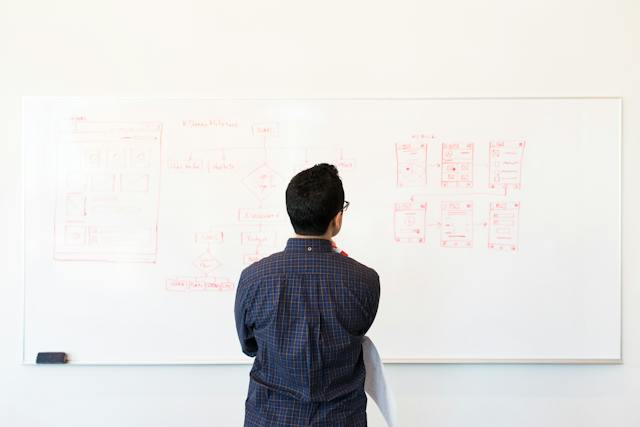
The Average User Experience Designer Salary
According to Glassdoor, a user experience designer’s salary, on average, is $101,696 per year in the United States.
However, it’s worth noting that your average salary can range anywhere between $77,000 and $116,000 per year.
Of course, there are factors that will affect which end of the scale you fall within. Expectedly, your experience level, which company you work for, your company’s size, and your location will affect your salary.
To help you find the best opportunities, we’ve listed the top five highest-paying cities in the United States.
- Annapolis Junction, Maryland — $159,497 per year
- Santa Clara, California — $140,552 per year
- Redmond, Washington State — $133,950 per year
- Irvine, California — $114,934 per year
- Orlando, Florida — $112,414 per year
Inspired by your dedication to the UX field, we’ve also revealed the highest-paying companies for UX designers within the US.
- Amazon ($80,000 – $163,000 per year)
- Microsoft ($55,000 – $139,000 per year)
- Google ($57,000 – $128,000 per year)
- eBay ($115,000 – $127,000 per year)
- Cisco Systems ($49,000 – $112,000 per year)
UX Design: Refining the User’s Experience
Hopefully, what you’ve taken away from this guide is that the work you do will improve the user’s experience.
It’s imperative always to have an eagerness to learn more about your craft, regardless of your current experience level.
You know how to become a UX designer. Now, it’s time to see proficient UX design in action. Consider Page Flows.
Our aptitude for user-centricity stems from our empathetic and established understanding of the user’s journey.
With Page Flows, you can explore your users’ journeys as they interact with your products. With Page Flows, you have access to an abundance of emails that we collect when we record user flows.
You will learn how to engage with your users as they experience your exceptional UX designs.
Get started today to access our growing library of user flow recordings and finally stay up-to-date with current design trends.



